Visit Swaraj Bhawan Museum To Witness The Traces Of Indian History
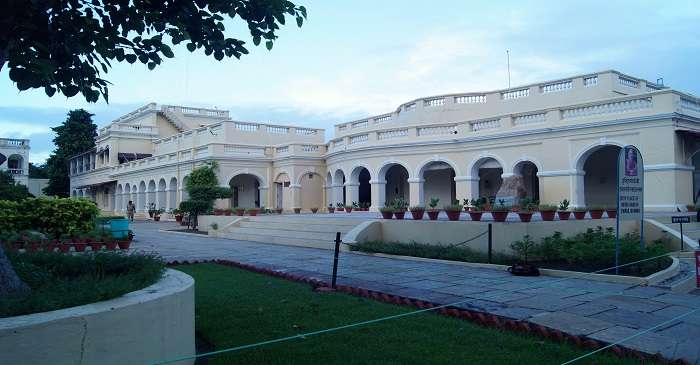
The building at 1 Church Road has changed many names from Mahmud Manzil to Motilal Nehru’s Anand Bhawan to the Indian National National Congress’ Swaraj Bhawan, the Nehru family’s residence until 1930. The Swaraj Bhawan Museum is managed by the ‘Jawaharlal Nehru Memorial Fund’ and has been open to the public since 1970. It has 42 rooms and several memorabilia, including a charkha used by Mahatma Gandhi, photographs of the Indian freedom movement, personal belongings of the Nehru family and an underground room that is said to have been used occasionally for meetings.
History Of The Building
The present-day Swaraj Bhawan Museum has been an important structure in the fight for independence. Several sessions of the Congress Working Committee have been held here, attended by numerous stalwarts of the independence struggle. Before knowing its contribution to the history of India, you should know how this house has had a history of its own.
1. Mahmud Manzil

The building at 1 Church Road, which has been known as Swaraj Bhawan for the longest time and houses the Swaraj Bhawan Museum today, was originally called Mahmud Manzil. It was constructed in 1871 for Syed Ahmad Khan, the 19th century Indian Muslim leader and prominent educationist at the behest of William Muir, then Lieutenant Governor. Originally, the house was called Mahmud Manzil, named after Syed Ahmad Khan’s son then, it was later occupied by Syed Mahmud, who lived here as a tenant at the time when he became the Justice of the Allahabad High Court.
Finally, in 1900, this building and the estate attached to it changed ownership and were purchased for Rs. 19,000 by Pandit Motilal Nehru, then a prominent lawyer who went on to become one of the first names of the independence struggle. He ended up naming this house Anand Bhavan (or abode of happiness).
Must Read: Must Visit Places In Allahabad
2. Anand Bhawan
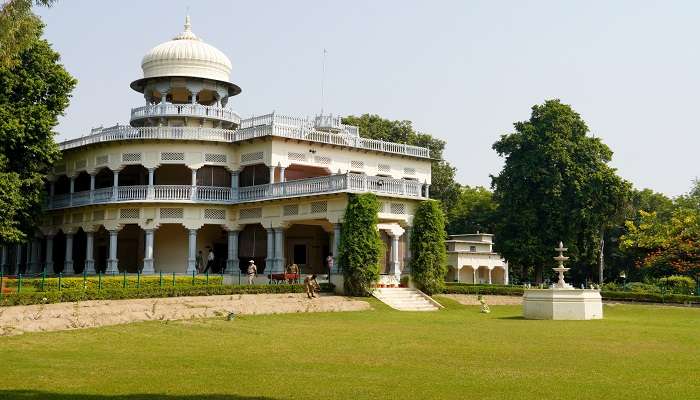
When Motilal Nehru made the purchase, the house was in complete disrepair, but the estate was huge. An extensive series of renovation work was carried out over the next decade. Nehru frequently visited Europe to buy the furniture he needed for his palatial mansion. He turned the mansion into an unreal yet veritable palace, described as an elaborate replica of an English country estate bifurcated between East and West, with an entourage of almost a hundred people living in the house.
Motilal named the house Anand Bhavan (or abode of happiness). After it was donated to the Indian National Congress in 1930, the Nehrus built another house next to it and named it Anand Bhavan, while this house was renamed to its present name.
3. Swaraj Bhawan
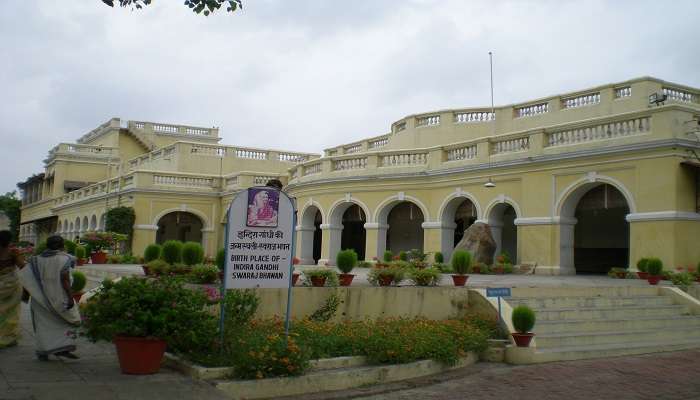
Ironically, at the housewarming party in 1871, Sir William Muir hoped and expected that this large palatial home in Civil Lines of Allahabad would go on to become the cement holding together the British Empire in India. But in the strangest turn of events, the house was bought by none other than Motilal Nehru in 1900, and this estate went on to become a cradle to the Indian Freedom Struggle and nurtured it to ultimately destroy the British occupation of India. Motilal Nehru was a prominent member of the Indian National Congress Party, who also served as the Congress President twice, and owing to this, a number of noted leaders and party activists would visit the Nehru House.
Following the rise of Motilal’s son, Jawaharlal Nehru, the mansion virtually became the centre of the Indian independence movement. It was informally the headquarters of the All India Congress Committee in the decade of 1920s before it was donated by Motilal Nehru to the Indian National Congress in 1930, to serve as the party’s official headquarters in the region. And the house was now renamed Swaraj Bhavan (or abode of freedom). A number of sessions of the Congress Working Committee have been held here, attended by numerous stalwarts like Gandhi, Sardar Patel and Vijaya Lakshmi Pandit to name a few.
Suggested Read: Museum of Illusions in India
4. Swaraj Bhawan Museum
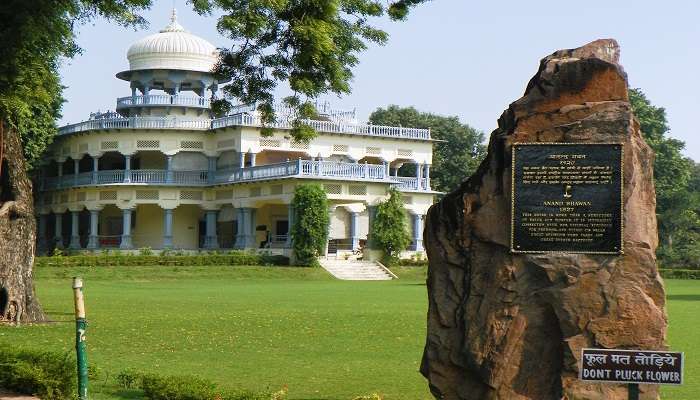
This building has not only witnessed the historic independence struggle, but it also functions as a museum today, carrying forward and spreading the legacy of our freedom fighters.
Attractions Of The Museum
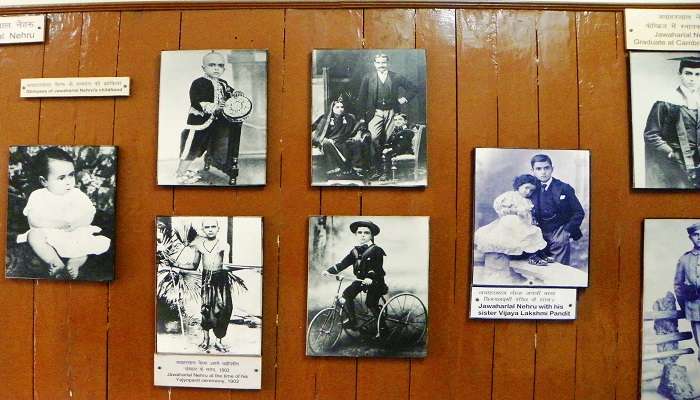
Presently, the Swaraj Bhawan Museum has a lot of interesting features to boast like:
- A museum which conducts regular audio visual program titled ‘The story of Independence’;
- An underground room where secret meeting and discussions where held during the pre-independence period;
- A school for children teaching creative art;
- The famous Jawahar Planetarium.
The planetarium, named after Jawaharlal Nehru, conducts five shows daily in English and Hindi. It is still one of the most visited places in Allahabad. The shows here are enjoyed by both children and adults. The prestigious ‘Jawaharlal Nehru Memorial Lecture’ is held in the planetarium every year on the 14th of November, Nehru’s birth date.
Suggested Read: Places To Visit Near Varanasi
Entry Fees
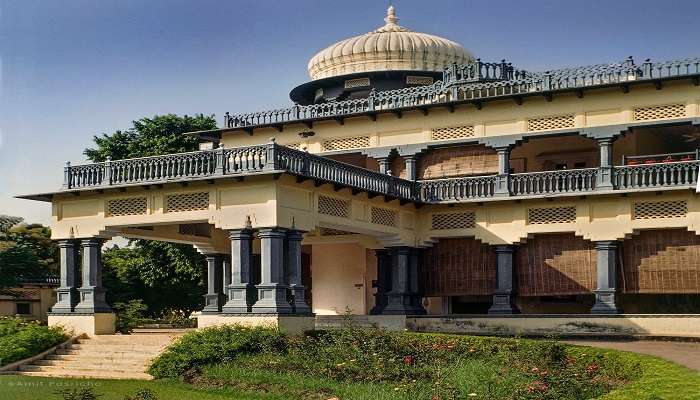
After visiting the museum you may enjoy the spectacular sight of the gardens and the lawns here which are lush green with grass and plants. A visit to this place is sure to make you acquainted with the history of India and her struggle for freedom.
No tickets needed for children less than 5 years of age.
Rs 5 per head for visitors more than 5 years of age.
Rs 50 per head fees for foreign visitors.
Concessions are available for groups of students from schools and colleges.
Further Read: Picnic Spots In Lucknow
Now you have complete information about Swaraj Bhawan Museum and the surrounding places of interest, giving you a list of reasons to visit Prayagraj. Make sure you plan your trip to Allahabad as soon as possible and don’t forget to explore this city’s historical marvels. Don’t miss out on exploring these wonders, and book your tickets now!
For our editorial codes of conduct and copyright disclaimer, please click here.
Cover Image Source: Shutterstock
Frequently Asked Questions About Swaraj Bhawan Museum
Is the Swaraj Bhawan Museum and Anand Bhawan Museum the same?
Swaraj Bhawan was formerly called Anand Bhawan until 1930 and was the residence of the Nehru family from 1900 to 1930. Then, in 1930, he donated the house to the Indian National Congress and bought another house near this estate to serve as the residence of the Nehru family. While the old house was renamed to Swaraj Bhawan, the new house took the name Anand Bhavan.
Did Motilal Nehru begin the circulation of a new daily paper?
Motilal Nehru was the first chairman of the board of directors of The Leader, a leading daily published from Allahabad. But, in 1919 he launched a new daily paper, The Independent, as a counterpoint to The Leader, which was much too liberal for Nehru's standard and articulate thought in 1919.
Did Motilal Nehru begin the circulation of a new daily paper?
Motilal Nehru was the first chairman of the board of directors of The Leader, a leading daily published from Allahabad. But, in 1919 he launched a new daily paper, The Independent, as a counterpoint to The Leader, which was much too liberal for Nehru's standard and articulate thought in 1919.
Was Motilal Nehru wealthy?
Owing to his successful practice as a lawyer, Nehru started on the path to becoming wealthy among the few leaders of the Indian National Congress. But, under the influence of MK Gandhi in 1918, he became one of the first to transform his life to exclude Western clothes and material goods, adopting a more native Indian lifestyle. Nonetheless, Nehru had to occasionally return to his practice of law to meet the expenses of his large family and large family homes.
When was Swaraj Bhawan transformed into a museum?
Since the late 1970s, the erstwhile residence of the Nehrus has been functioning as a museum, being open for the public to visit and know more about the workings of the Indian National Congress and delve more into the intricacies of the freedom struggle.
What is the most surprising fact about Allahabad?
Allahabad (now renamed as Prayagraj) has provided the largest number of prime ministers of Post-independence India, namely Pt. Jawahar Lal Nehru, Lal Bahadur Shastri, Indira Gandhi, Rajiv Gandhi and V.P.Singh. Adding to that, former Prime Minister Chandra Shekhar was a student of Allahabad University. Hence, we can satisfactorily conclude that Prayagraj is basically an administrative and educational city.
People Also Read:
Sudha Cars Museum Auckland War Memorial Museum Queensland Museums

Innovative Content Writer Focused on Producing High quality, Original Content that drives traffic and engages readers. Experienced in Content strategy and analytics to measure content performance using tools such as SQL, Power BI, Excel.











